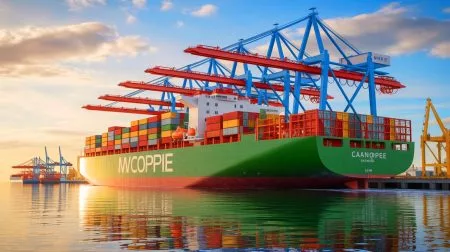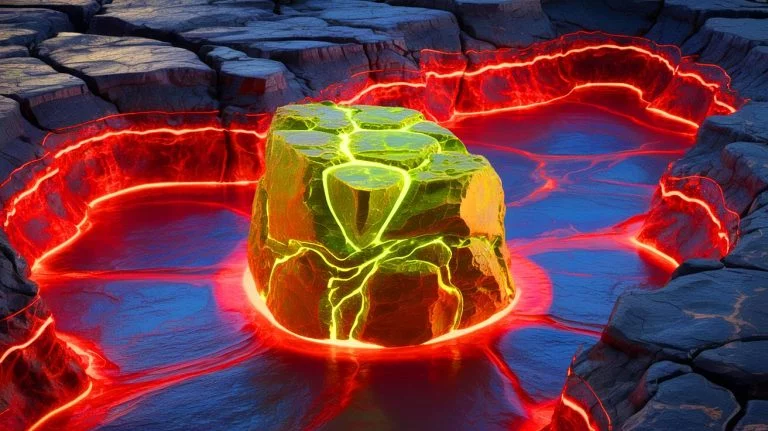| IN A NUTSHELL |
|
Recent scientific endeavors have unveiled a fascinating aspect of our planet’s geology, providing new insights into how water is transported into the Earth’s mantle. This discovery highlights the crucial role of olivine, a prevalent mineral in both oceanic and continental plates. Researchers from the University of Potsdam and the Helmholtz Centre for Geosciences have conducted groundbreaking measurements, revealing that only the oldest and fastest-moving oceanic plates can carry water deep into the Earth’s mantle due to olivine’s unique heat-conducting properties. This revelation not only enhances our understanding of tectonic processes but also opens up new questions about Earth’s internal water reservoirs.
The Role of Olivine in Tectonic Plate Dynamics
Olivine is a dominant mineral in the Earth’s upper mantle and is a significant component of the oceanic lithosphere, making up about 80% of its structure. This mineral’s ability to conduct heat through radiation plays a pivotal role in the dynamics of tectonic plates. When two tectonic plates collide, the denser oceanic plate, rich in olivine, subducts beneath the lighter plate, descending into the mantle in a process known as subduction. This movement is crucial for understanding the Earth’s geological activity.
Research indicates that the heat transfer properties of olivine are instrumental in determining whether water-bearing minerals are transported deep into the mantle. The mineral’s radiative thermal conductivity accounts for about 40% of the heat transfer in the mantle, influencing the temperature and density of subducting slabs. Consequently, only plates older than 60 million years and moving faster than 10 centimeters per year can transport water to significant depths, impacting seismic activity and mantle hydration.
Jaya Anand Singh’s Research Path : A Journey from Curiosity to Contribution
Infrared Transparency: A Breakthrough in Olivine Research
The recent study by geodynamicist Enrico Marzotto and his team marks a significant advancement in understanding olivine’s properties. For the first time, they measured the infrared transparency of olivine under conditions mimicking the Earth’s mantle. This breakthrough demonstrates that olivine remains transparent to infrared radiation, even under extreme pressure and temperature.
This transparency facilitates rapid radiative heating of subducting slabs, causing water-bearing minerals to break down at shallower depths. This process can explain the occurrence of deep earthquakes and challenges previous assumptions about water transport into the mantle. The findings underscore the importance of radiative heat transport in influencing the thermal and mechanical behavior of subducting plates, reshaping our understanding of tectonic and seismic activities.
Implications for Earth’s Water Reservoirs
The discovery that only specific oceanic plates can transport water deep into the mantle has profound implications. The Mantle Transition Zone (MTZ), located between 410 to 660 kilometers beneath the Earth’s surface, is believed to be a vast water reservoir, potentially containing more water than all of Earth’s oceans combined. Understanding how water reaches this zone is crucial for comprehending Earth’s water cycle and its impact on mantle dynamics.
This research provides valuable numerical tools for predicting the geodynamic behavior of thermal anomalies in the mantle, whether they are hot plumes rising from the deep mantle or cold subducting slabs. These insights are vital for predicting geological phenomena such as volcanic eruptions and earthquakes, contributing to our knowledge of Earth’s complex systems.
Future Directions in Geoscience Research
The study conducted by the University of Potsdam and GFZ Potsdam represents a significant milestone in geosciences. By elucidating the role of olivine in heat transfer and water transport, it opens new avenues for research into Earth’s internal processes. Future investigations could explore how variations in olivine composition affect its heat-conducting properties and the implications for mantle convection and plate tectonics.
As scientists continue to unravel the mysteries of Earth’s interior, this research provides a foundation for developing more accurate models of mantle dynamics and predicting geological events. The findings emphasize the need for interdisciplinary collaboration and innovative measurement techniques to deepen our understanding of the planet’s inner workings.
As we gain more insights into the intricate processes governing Earth’s interior, we are left with pressing questions about the planet’s future. How will these discoveries shape our understanding of Earth’s geological history, and what new challenges will they present for predicting and mitigating natural disasters?
Did you like it? 4.3/5 (28)







Wow, does this mean there’s more water under the earth than in all the oceans? 🌊
I’m no scientist, but doesn’t this sound like something out of a sci-fi movie? 🤔
How is this terrifying? How is this NOT major scientific news? A water reservoir larger than all the combined oceans a few hundred kms beneath our feet? Alllll thanks to a ” prevalent rock” which apparently,nobody that’s commented, knows anything about. Yeahhhh ok….wake me when the movie comes out
Terrifying 🥱
How does this affect our understanding of earthquakes?
So, olivine is the real MVP of Earth’s geology? Cool!
Why hasn’t this been discovered earlier if it’s so important? 🤨
How much water are we talking about here? Like, a new ocean?
Is this going to affect oil drilling in any way?
Olivine sounds like a superhero in the mineral world. 🦸♂️
Does anyone else find the idea of a trapped ocean a bit terrifying? 😱
I’m curious about the potential environmental impact of this discovery.
Is this the reason why some earthquakes are more intense than others?
Could this discovery lead to new technologies or innovations?
Wait, so there’s a whole ocean trapped inside Earth? Mind blown! 💥
How certain are scientists about these findings?
This is incredible! Can’t wait to see what other secrets Earth’s hiding. 🌍
Does this mean we should be worried about more earthquakes?
Why are only the oldest and fastest plates able to carry water into the mantle?
Anyone else suddenly interested in studying geology? Just me? 🤓
Can this trapped ocean be accessed for water supply?
Great article! Thanks for keeping us informed on these groundbreaking discoveries.
Is there a possible link between this discovery and climate change?
I’m skeptical. How reliable is this research? 🤨
Could this change our understanding of Earth’s water cycle?
Is this water accessible in any way, or is it just trapped forever?
OMG, what if there’s life in that trapped ocean? 🐟
What’s the next step for scientists after this discovery?
Just when I thought I knew everything about Earth… 😅
Wow, this olivine mineral is really showing off! 😄
How does this discovery change our understanding of tectonic plate movements?
I’m amazed at how much there is to learn about our planet. 🌎
Sounds like Earth has more mysteries than we ever imagined.
How will this discovery impact future geological research?
I’m curious about how this affects the theory of plate tectonics.
Is this discovery a game-changer in the field of geosciences?
Thanks for sharing this! It’s fascinating to learn about these hidden aspects of Earth.
Thank you for this enlightening article. It was a fascinating read!
So that’s where all water of Noah’s Flood RECEDED to!
GENESIS 8:3 – “The water receded steadily from the earth. At the end of the hundred and fifty days the water had gone ‘DOWN’. ”
“DOWN” to where? Within the Earth’s Crust of course! More evidence of a GLOBAL FLOOD.
Why the terrifying headline?
Why are nearly all comments 2 lines & cheesy?
Why are nearly all comments 1-3 minutes apart?
Publishing so many words to say so little is not very “sustainable.”